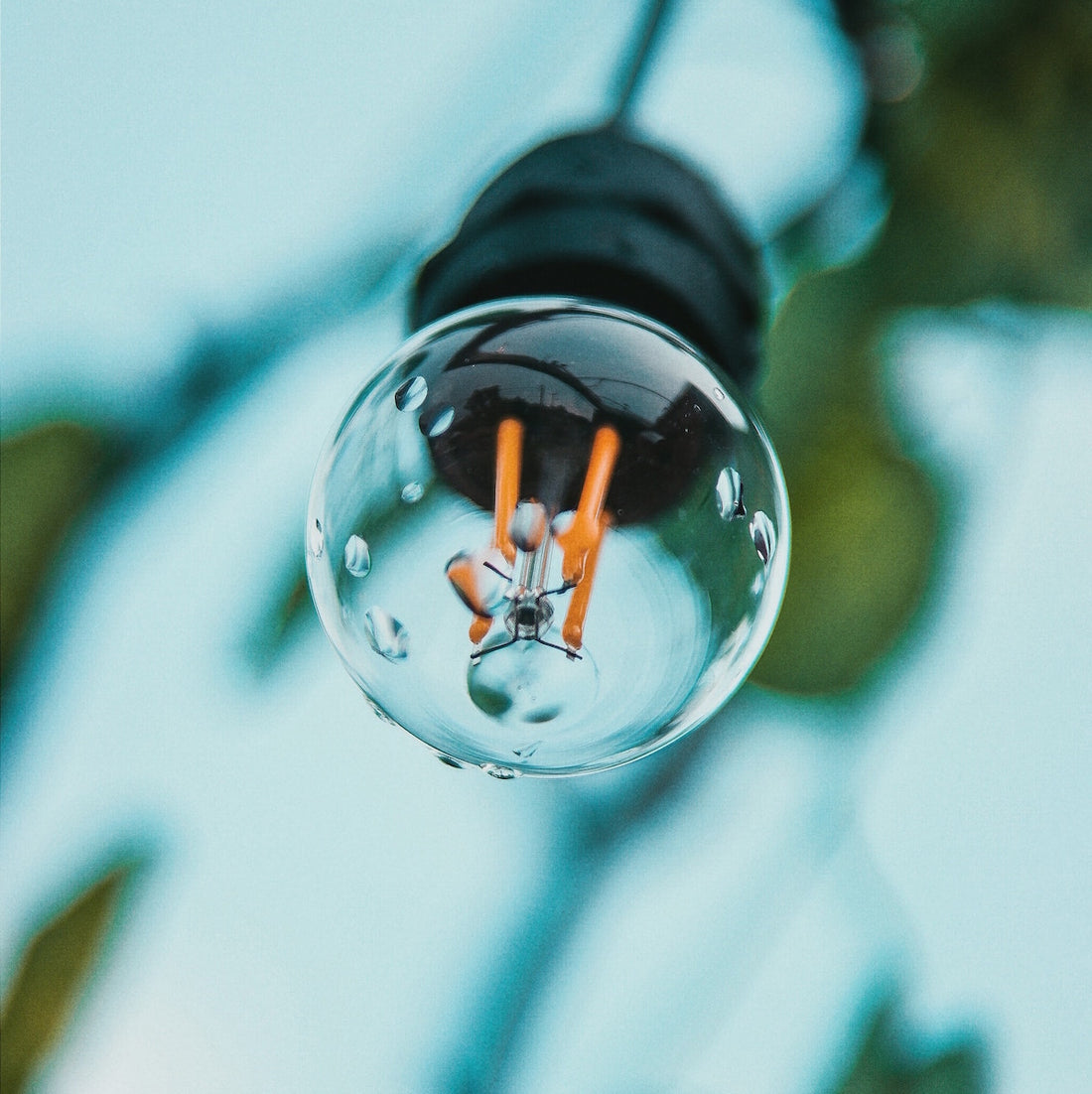
Our guide to LED light bulbs
Share this blog
LED Bulbs
It used to be a straightforward decision - buying light bulbs! Now with the different descriptors of halogen, LED, incandescent, CLFs it can be a bit confusing. We have put together this guide on what it all means and why we have chosen LED bulbs to compliment our handmade lights.
Incandescent bulbs
When there was only one type of light bulb available, this was it! A simple wire filament which the electricity heated up and generated light. It was cheap to manufacture but extremely inefficient as so much energy was lost to heat rather than light. These bulbs have now being phased out due to the CO2 emissions and improved alternatives available.
LED bulbs were very expensive when they were first available but as manufacturing processes improve, the cost has reduced and continues to do so as the popularity of them increases. The design means that they are incredibly energy efficient - there is no element to heat up and so almost all the electricity supplied to the bulb goes toward the light output rather than heat loss. This also means that the bulb and surrounding shade doesn't heat up.
Compared to other light bulbs, LEDs tend to last at least a year before needing to be replaced. The life expectancy of these bulbs is usually displayed by number of hours which can appear as an impressive as 50,000 hours! All we really need to know is that the initial higher cost when spread out over this time is considered by most to be worthwhile.
We particularly like that LED bulbs are so much better for the environment than other bulbs. Some conventional bulbs contained toxic materials or specialist glass but LEDs are 100% recyclable.

Buying LED bulbs
LEDs are suitable as ambient lighting or task lighting due to the colour and temperature ranges available. If you know the Wattage of the bulb you used to like in your home then it is easy to find which LED bulb would be a suitable replacement. We have included a table below showing how to convert from traditional Watts to the low energy equivalent.
| Incandescent Watts | LED Watts |
| 40 | 4-5 |
| 60 | 6-8 |
| 75-100 | 9-13 |
| 100 | 16-20 |
(table data based on source: eartheasy.com)
Not all LED bulbs are dimmable. This is a requirement you will need to look for if you are wanting to be able to operate your bulbs via a dimmer switch. Most dimmer switches are now compatible with LED bulbs but older versions sometimes don't work. Look for varilight v-pro dimmers or trailing edge LED compatible ones if you are buying new dimmer switches.
The colour temperature is often provided when buying LED bulbs and is given in Kelvin. This is worth considering if you are buying bulbs for a specific use or room in your home. A lower temperature is more suited to ambient lighting whereas the higher temperatures would be appropriate for task lighting. The main light colours are:
2200K - very warm white
2700-3200K - warm white
4000-5000K - daylight
5500 - 6500K - cool white
We provide 4W, 2300K bulbs with our wall and ceiling lights. This creates a warm, homely tone suitable for bedrooms and living spaces. View our lighting and LED bulb collection by clicking here.
We hope you have found this guide useful. If you would like to pin it to refer to later you can do so here:
